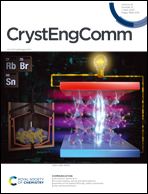Crystalline phase transformation of Co-MOF derivatives on ordered mesoporous carbons for high-performance supercapacitor applications†
Abstract
Metal–organic frameworks (MOFs) are regarded as self-sacrificial templates to prepare various transition metal-based electrode materials. However, there is still a lack of information on the electrochemical performance difference of MOF-derived hydroxides, oxides and phosphates in recent research. In addition, the rate capability is still a problem that hampers the application of MOF-based derivatives. Hence, it is necessary to choose suitable materials with outstanding electrical conductivity for MOF-based derivatives. In this study, a series of MOF-based derivatives, namely, Co-MOFs, NiCo-LDH (layered double hydroxide), NiCoO2, NiCoP, SAC@NiCo-LDH and SAC@NiCoP were prepared by combining suitable methods such as ion exchange, hydrothermal processes, oxidation and phosphorization. The electrochemical performance of these samples at 1 A g−1 was found in the order of SAC@NiCoP > SAC@NiCo-LDH > NiCoP > NiCo-LDH > NiCoO2. SAC@NiCoP exhibits the best specific capacitance and cycling stability when compared with the remaining materials. Phosphating enhances the electrical conductivity, the layer structure facilitates the intercalation/deintercalation of electrolyte ions, and oxidation inhibits the release of electrochemical performance. Hence, the enhancement effect is arranged as follows: phosphorization > layer structure > oxidation. This work analyzes the performance differences of MOF-based materials with different modification methods and crystal structures carefully and provides reliable criteria for the design and screening of advanced electrode materials.



 Please wait while we load your content...
Please wait while we load your content...